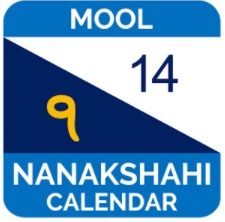Vaisakhi Celebration | 05.01.2014
Vaisakhi is the festival that celebrates the founding of the Sikh community known as the Khalsa. It is celebrated on April 14 each year. On Vaisakhi day in 1699, Guru Gobind Singh summoned Sikhs from all over India to the city of Anandpur Sahib. At this gathering, the Guru called upon Sikhs to uphold their faith and preserve the Sikh religion.
Sikh community, the Office of the Pentagon Chaplain will host the Pentagon observance of the Sikh Vaisakhi Celebration. The holiday is observed by millions of Sikhs in India, Pakistan, the United Kingdom, and North America.
Why is Vaisakhi celebrated on April 14th each year?
Also see [.pdf] Vaisakhi Dates In 1699 | Past Vaisakhi Dates
Since all the past authors have reckoned the 30th March 1699 why to go on sticking to Vaisakhi Day on 13/14th April?” (Re: Vaisakhi 1756 BK – 1699 Julian)
You must have seen from the previous discussion that if most authors have given 30 March, 1699 as the Baisakhi date of the ‘Creation of the Khalsa’, it does not necessarily mean that they have all done the calculations. In fact, Dr. Ganda Singh’s source was Indian Ephemeris – Swamikannu Pillai. In it Pillai gives Sankranti date as 29 March, but gives Vaisakh 1 against 30 March. The date of 30 March applies to Tamil Nadu, because the rule there is – if the time of Sankranti is after sunset (the Sankranti time on 29th March was 9:06 p.m.), then the Day 1 of the month is on the following day after Sankranti. The rule in Punjab is that it does not matter what time the Sankranti is, day one will be on the day of Sankranti (sunrise to sunrise rule). Obviously, Dr Ganda Singh was not aware of this rule. Perhaps, he did not read the introduction, otherwise he would have taken March 29 given on the same page. Indian Calendars- Sewell and Dixit also give 29th March 1699 Julian as the date of Sankranti. Of course, in my Jantri 500 Years, I have given 29 March 1699 Julian.
Most historians have either followed Dr Ganda Singh, or made the same mistake using IE of Pillai. However, Dr Sangat Singh in his book Sikhs in History correctly gives this date as 29th March, 1699 Julian. Dr Ganda Singh was an historian par excellence, but he was not an expert on calendars. Most historians have made many blunders doing conversion of dates. This was the reason, I produced my Jantri 500 Years so that dates could be easily, correctly, and quickly converted without calculation. I have great regard for Dr Ganda Singh as an historian. But, where he is wrong I have not minced words. However, the following is the dedication I wrote in my book:
“This book is dedicated to the memory of late Dr Ganda Singh who spent his life to discover the truth and sift fact from fiction.”
Pal Singh Purewal
Julian dates should not be observed in Gregorian Calendar. In Nanakshahi calendar we have fixed 14th April as the day of Vaisakhi for ever.
The only thing common with the Christian Calendar is, that Nanakshahi Calendar is also based on the length of the tropical year, so that months do not shift in seasons.
The frequently asked questions based on these answers and the data behind the evidence are based on published papers, evidence and research by thought leaders, experts, historians and scholars in the field. In addition, great deal of history and insight exists in Pal Singh Purewal’s published books, papers and public responses to: Interview with Indian Express|Gurmit Singh |Mr. Lamba|Tara Singh| Harcharan Singh
